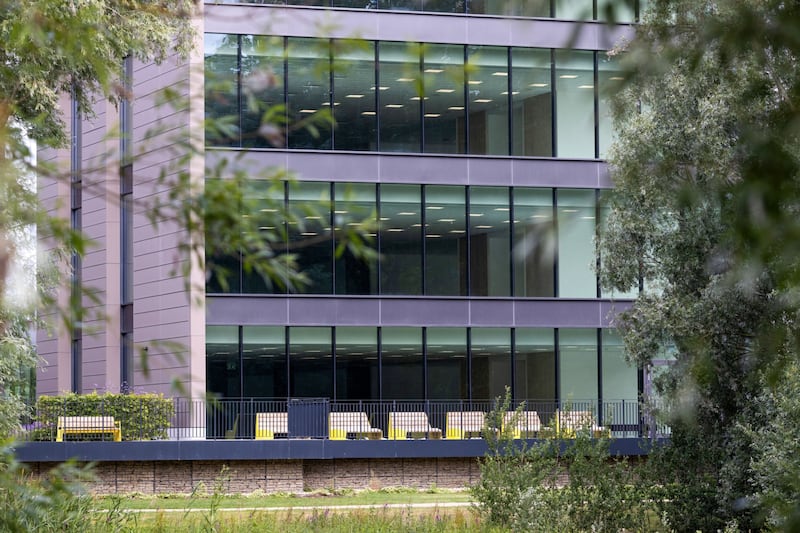Commercial real estate investors and lenders are slowly confronting an ugly question – if people never again shop in malls or work in offices the way they did before the pandemic, how safe are the fortunes they piled into bricks and mortar?
Rising interest rates, stubborn inflation and squally economic conditions are familiar foes to experienced commercial property buyers, who typically ride out storms waiting for rental demand to rally and the cost of borrowing to fall.
Cyclical downturns rarely prompt fire sales, so long as lenders are confident the investor can repay their loan and the value of the asset remains above the debt lent against it.
This time though, analysts, academics and investors interviewed by Reuters said things could be different.
With remote working now routine for many office-based firms and consumers habitually shopping online, cities like London, Los Angeles and New York are bloated with buildings local populations no longer want or need.
That means values of city-centre skyscrapers and sprawling malls may take much longer to rebound. And if tenants cannot be found, landlords and lenders risk losses more painful than in earlier cycles.
“Employers are beginning to appreciate that building giant facilities to warehouse their people is no longer necessary,” said Richard Murphy, political economist and professor of accounting practice at the UK's Sheffield University.
“Commercial landlords should be worried. Investors in them would be wise to quit now,” he added.
Wall of debt
Global banks hold about half of the $6 trillion outstanding commercial real estate debt, Moody's Investors Service said in June, with the largest share maturing in 2023-2026.
US banks revealed spiralling losses from property in their first half figures and said more was to come.
Global lenders to US industrial and office real estate investment trusts (REITs), who supplied credit risk assessments to data provider Credit Benchmark in July, said firms in the sector were now 17.9 per cent more likely to default on debt than they estimated six months ago. Borrowers in the UK real estate holding and development category were 4 per cent more likely to default.
Jeffrey Sherman, deputy chief investment officer at $92 billion US investment house DoubleLine, said some US banks were wary of tying up precious liquidity in commercial property refinancings due in the next two years.
“Deposit flight can happen any day,” he said, pointing to the migration of customer deposits from banks to higher-yielding 'risk-free' money market funds and Treasury bonds.
“As long as the Fed keeps rates high, it's a ticking time bomb,” he said.
Some global policymakers, however, remain confident that the post-pandemic shift in the notion of what it means “to go to work” will not herald a 2008-2009 style credit crisis.
Demand for loans from euro zone companies tumbled to the lowest on record last quarter, while annual US Federal Reserve stress tests found banks on average would suffer a lower projected loan loss rate in 2023 than 2022 under an extreme scenario of a 40 per cent drop in commercial real estate values.
Average UK commercial property values have already fallen by about 20 per cent from their peak without triggering major loan impairments, with one senior regulatory source noting that UK banks have far smaller property exposure as a proportion of overall lending than 15 years ago.
But Charles-Henry Monchau, chief investment officer at Bank Syz, likened the impact of aggressive rate tightening to dynamite fishing.
“Usually the small fishes come to the surface first, then the big ones – the whales – come last,” he said.
“Was Credit Suisse the whale? Was SVB the whale? We'll only know afterwards. But the whale could be commercial real estate in the US.”
Cutting space
Global property services firm Jones Lang LaSalle – which in May pointed to a 18 per cent annual drop in first quarter global leasing volumes – published data this month showing prime office rental growth in New York, Beijing, San Francisco, Tokyo and Washington turned negative over the same period.
In Shanghai, China's leading financial centre, office vacancy rates rose 1.2 percentage points year-on-year in Q2 to 16 per cent, Savills said, suggesting a recovery would depend on nationwide stimulus policies succeeding.
Businesses are also under pressure to slash their carbon footprint, with HSBC among those cutting the amount of space they rent and terminating leases at offices no longer considered green enough.
More than 1 billion square metres of office space globally will need to be retrofitted by 2050, with a tripling of current rates to at least 3 per cent to 3.5 per cent of stock annually to meet net-zero targets, JLL said.
Australia's largest pension fund, the A$300 billion AustralianSuper, is among those on the sidelines, saying in May it would suspend new investment in unlisted office and retail assets because of poor returns.
Meanwhile, short-sellers continue to circle listed property landlords the world over, betting that their stock prices will sink.
According to Capital Economics, global property returns of around 4 per cent a year are forecast this decade, compared with a pre-pandemic average of 8 per cent, with only a slight improvement expected in the 2030s.
“Investors must be willing to accept a lower property risk premium,” Capital Economics said. “Property will look overvalued by the standards of the past.”






